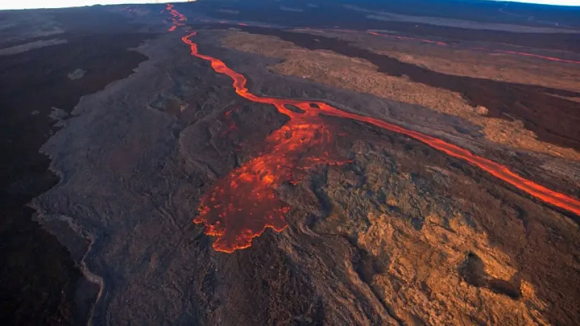Mola Loa, located on the island of Hawaii, has not erupted since 1984, and this time its activity began on November 27. Photo: PL
Cuban scientists are currently ruling out risks to the country from the emission of sulfur dioxide from the eruption of the Hawaiian volcano Mauna Loa (Big Mountain), Citma reported today.
According to the National Center for Earthquake Research (Cenais) Geodynamic Observatory of the Ministry of Science, Technology and Environment (Citma), although they do not directly threaten the population, the emissions represent high levels of concentration in the upper layers of the atmosphere of the Gulf of Mexico and the western region of the country.
Cenais experts believe that the situation must be evaluated by the Cuban environmental authorities, given the possible effects that it may cause on human health and others such as acid rain, aspects that are being evaluated in other countries where this gas arrives from the volcano.
A special notice from the Institute of Meteorology’s Center for Pollution and Atmospheric Chemistry announced that weekly forecasts are being made using the output of the Silam Global Air Quality Model, of the Copernicus Project.
He noted that no surface concentrations of sulfur dioxide have yet been detected in Cuba that exceed the maximum allowable concentration of 45 micrograms per cubic meter within 24 hours, according to Cuban Standard NC 1020:2014.
Volcanic gases, especially sulfur dioxide, are concentrated around the crater and vents of the volcano.
These can combine with other particles in the environment and form a smog known as a “vog,” which can spread across a Pacific island and even reach other areas of the state.
Exposure to this smog can cause burning eyes, headaches, and a sore throat, and for those with asthma or other respiratory issues, it may have medical significance.
Mola Loa, located on the island of Hawaii, has not erupted since 1984, and this time its activity began on November 27.
According to the USGS, it has erupted 33 times since 1843.
(with info from PL)

“Beeraholic. Friend of animals everywhere. Evil web scholar. Zombie maven.”


:quality(85)/arc-anglerfish-arc2-prod-infobae.s3.amazonaws.com/public/PFKDHFXRMNAZPGWUZDXMUYH6CM)


:quality(85)/cloudfront-us-east-1.images.arcpublishing.com/infobae/RRSAOHZ4YNHDNIHIZBEU3B2NE4.jpg)

More Stories
The phrase that experts recommend using every day to be happier
The solution to your health problem will come from space
Space Revolution: The James Webb Telescope has identified a super-Earth planet with an atmosphere outside our solar system